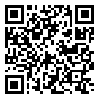Volume 24, Issue 3 (2021)
mjms 2021, 24(3): 0-0 |
Back to browse issues page
Download citation:
BibTeX | RIS | EndNote | Medlars | ProCite | Reference Manager | RefWorks
Send citation to:



BibTeX | RIS | EndNote | Medlars | ProCite | Reference Manager | RefWorks
Send citation to:
sabernia T, tiraihi T, movahedin M, Mowla S J. Neural Transdifferentiation of embryonic like stem cells by lithium chloride. mjms 2021; 24 (3)
URL: http://mjms.modares.ac.ir/article-30-57520-en.html
URL: http://mjms.modares.ac.ir/article-30-57520-en.html
1- Department of Anatomical Sciences, Faculty of Medical Sciences, Tarbiat Modares University, Tehran, Iran
2- Department of Anatomical Sciences, Faculty of Medical Sciences, Tarbiat Modares University, Tehran, Iran ,ttiraihi@gmail.com
3- Department of Genetics, Faculty of Basic Sciences, Tarbiat Modares University, Tehran, Iran
2- Department of Anatomical Sciences, Faculty of Medical Sciences, Tarbiat Modares University, Tehran, Iran ,
3- Department of Genetics, Faculty of Basic Sciences, Tarbiat Modares University, Tehran, Iran
Abstract: (2398 Views)
Introduction:
Spermatogonial stem cells (SSCs) because of its ability to be reprogrammed into embryonic-like stem cells (ELSCs) can be a new source of pluripotent stem cells which can play a promising role in regenerative medicine. In this study, SSCs were transdifferentiated into neuron-like cells (NLCs) using two-step differentiation protocol. pluripotency and germ cells markers were analyzed in SSCs and ELSCs. Also neural markers were analyzed in ELSCs and NLCs.
Methods:
Neonatal rat testes were mechanically dissected and digested then was cultured in DMEM supplemented with 15% FBS. The medium was replaced with DMEM containing LIF, mercaptoethanol, EGF, bFGF, and GDNF. After 5 weeks, ELSCs colonies appeared. SSCs and ELSCs were evaluated by Stra8, plzf (germ cells markers) Oct4, and sox2 (pluripotency markers) using qRT-PCR. The ELSCs colonies were isolated and cultured in DMEM containing 0.5 mM lithium chloride. In day 5, ELSCs transdifferentiated to NLC. They were evaluated using neural marker including Neurofilament 200 (NF-200), choline acetyltransferase (CAT), synaptophysin (Syp), Nestin (Nes), Neurogenin1 (NG1), Neurod1 (Nd1), and Neurofilament 68 (NF-68)gene expression.
Results:
Result showed increasing expression of Oct4 and sox2 genes and low level of Stra8 and plzf expression in ELSCs than SSCs. After neural transdifferentiation by lithium chloride induction, neural markers were examined by RT-PCR in ELSCs and NLCs. The result showed expression of NF-200, CAT, Syp, Nes, NG1, Nd1 and NF-68 in NLCs opposed to ELSCs.
Conclusion:
This study indicates lithium chloride can promote ELSCs to transdifferentiate into NLCs.
Spermatogonial stem cells (SSCs) because of its ability to be reprogrammed into embryonic-like stem cells (ELSCs) can be a new source of pluripotent stem cells which can play a promising role in regenerative medicine. In this study, SSCs were transdifferentiated into neuron-like cells (NLCs) using two-step differentiation protocol. pluripotency and germ cells markers were analyzed in SSCs and ELSCs. Also neural markers were analyzed in ELSCs and NLCs.
Methods:
Neonatal rat testes were mechanically dissected and digested then was cultured in DMEM supplemented with 15% FBS. The medium was replaced with DMEM containing LIF, mercaptoethanol, EGF, bFGF, and GDNF. After 5 weeks, ELSCs colonies appeared. SSCs and ELSCs were evaluated by Stra8, plzf (germ cells markers) Oct4, and sox2 (pluripotency markers) using qRT-PCR. The ELSCs colonies were isolated and cultured in DMEM containing 0.5 mM lithium chloride. In day 5, ELSCs transdifferentiated to NLC. They were evaluated using neural marker including Neurofilament 200 (NF-200), choline acetyltransferase (CAT), synaptophysin (Syp), Nestin (Nes), Neurogenin1 (NG1), Neurod1 (Nd1), and Neurofilament 68 (NF-68)gene expression.
Results:
Result showed increasing expression of Oct4 and sox2 genes and low level of Stra8 and plzf expression in ELSCs than SSCs. After neural transdifferentiation by lithium chloride induction, neural markers were examined by RT-PCR in ELSCs and NLCs. The result showed expression of NF-200, CAT, Syp, Nes, NG1, Nd1 and NF-68 in NLCs opposed to ELSCs.
Conclusion:
This study indicates lithium chloride can promote ELSCs to transdifferentiate into NLCs.
Keywords: lithium chloride, Embryonic-like stem cells, Spermatogonial stem cells, Transdifferentiation, neural cells
Send email to the article author
| Rights and permissions | |
 |
This work is licensed under a Creative Commons Attribution-NonCommercial 4.0 International License. |






